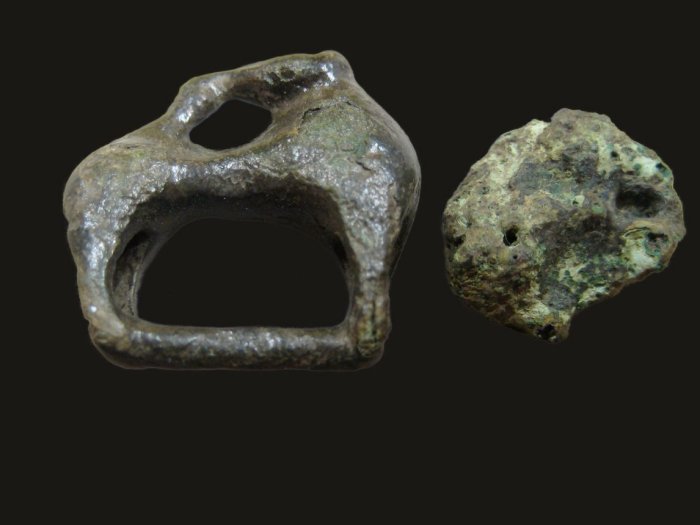Gigantic Viking Age Burial Ground With Artifacts And 50-Meter-Long Shipwreck Unearthed In Tvååker, Halland, Sweden

Jan Bartek – AncientPages.com – During an excavation in the small village of Tvååker in Halland County, Sweden, archaeologists made a significant discovery: a large Viking Age burial site! They uncovered 139 graves containing human and animal bones, costume jewelry, clay pots, bonfires, and shipwrecks. This find may represent just a portion of what remains to be discovered at the site.
“We have only excavated about six percent of the burial field”, says Petra Nordin, project manager at the Archaeologists at the State Historical Museums.
The science team began investigating the site in Tvååker in 2017, initially without any indication of the remarkable discovery that would unfold. Early on, there was no expectation of significant findings; however, researchers soon started to suspect that the area held substantial historical importance. The municipality had plans to install new water pipes and construct a roundabout, leading to a phased excavation of the site. Initial discoveries included flint and a furnace, but these were just precursors to an even more significant revelation.
Anders Kjellin scouts to the northwest towards Tvååker’s mouth. Credit: Arkeologerna – CC BY
In the first year itself, Petra Nordin recognized that the site’s significance exceeded initial expectations when they uncovered remains from Viking Age burials. This finding marked an important moment in understanding the historical depth of Tvååker and the neighboring area.
“We had found five graves with bone remains and fire layers. The bones were from dogs and humans. Then we realized there was a large Viking burial ground that we had to focus on,” the science team said in a press release.
Anders discovers grave 19 while excavating. Credit: Arkeologerna – CC BY
The burial ground is strategically situated on a flat ridge, intersected by two significant transport routes. To the east lies the Tvååkersån river (historically known as Uttran), which flows out at Galtabäck. Additionally, the old country road, järnbärarvägen, connecting Spannarp to Gamla Köpstad, traverses this burial site. The village name Tvååker and other place names like Järnmölle, Järnvirke, Gamla köpstad, Vare, Galtabäck, and Utteros are referenced in early historical documents.
Standing stones near the road to Tvååker. Credit: Arkeologerna – CC BY
Petra Nordin examines one of the graves, grave 20. Credit: Arkeologerna – CC BY
Buckle with a horse biting its tail. Credit: Arkeologerna – CC BY
However, as Nordin points out, a challenge arises because the land has been plowed and leveled for agriculture and pasture development. This activity has eradicated all above-ground structures and fragmented the graves. Consequently, archaeologists have had to rely on subsurface interpretations due to this extensive disruption. Despite these challenges, investigations have identified locations of bonfires and discovered what is believed to be a 50-meter-long shipwreck atop the ridge.
The archaeologists found three large shipwrecks and a ship-shaped mound. A significant portion of the burial field is likely under modern construction, as only about six percent has been excavated.
Gilded bird pendant. Credit: Arkeologerna – CC BY
Petra Nordin believes the project is unique due to its scientific approach.
“When you work as usual, you already have an idea of how big a grave is from the start. But here, where we had to interpret everything from below, there is a big focus on the cremation sites. We interpreted an area as the place where someone dug down and built a fire. We found a square burial in another location with three large fire pits and a shard packing. In the grave were 17 vessels, human and animal bones, woven weights, and iron arrowheads. We interpreted the square as a supply air construction for a fire above ground,” she says.
Deciphering what appeared when the archaeologists cleared away the earth’s masses has often been problematic and difficult.
“Looking for bones and finding pits where the raised stones may have stood or bottoms of mounds where the superstructure is missing is exciting but incredibly difficult. Sometimes we have used a metal detector and found objects in a place that allow us to say this is probably a grave,” says Anders Kjellin of the Archaeologists.
Part of an Arab coin, a so-called Abbasid. Credit: Arkeologerna – CC BY
Most of the objects discovered at the site show significant fire damage. Among these artifacts are costume buckles, such as fibulae and clasp buckles, ceramics, and a clip of an Arab silver coin dated between 795 and 806 AD. This dating aligns with the oldest graves found at the location. Additionally, researchers have uncovered animal bones from birds, dogs, cattle, and pigs alongside human remains. During this period, it was customary to cremate the deceased on a pyre.
After cremation, unburnt animals were placed atop before sealing the graves; cattle like cows were commonly used for what is believed to be food sacrifices.
A gilded clasp buckle. Credit: Arkeologerna – CC BY
Bronze pin found in one of the graves. Credit: Arkeologerna – CC BY
Despite these findings, many questions remain unanswered for researchers. One of the most intriguing mysteries is determining where those buried lived during their time. Archaeologists are still puzzled by this aspect but suggest there might have been a village in Tvååker that experienced significant growth during the early Viking Age. The burial field thus serves as a crucial element in understanding Iron Age studies in this region. Petra Nordin notes that while it’s still unclear where exactly this village was located, several theories exist regarding its possible location.
See also: More Archaeology News
“There has been talking, among other things, that there may have been a Viking-era trading post at Gamla Köpstad south of Varberg or at Galtabäck harbor. Is the village at the mouth of Tvååker, or is it near the burial ground? We don’t know. But it is exciting to see what will emerge in the future,” Nordin says.
Written by Jan Bartek – AncientPages.com Staff Writer














